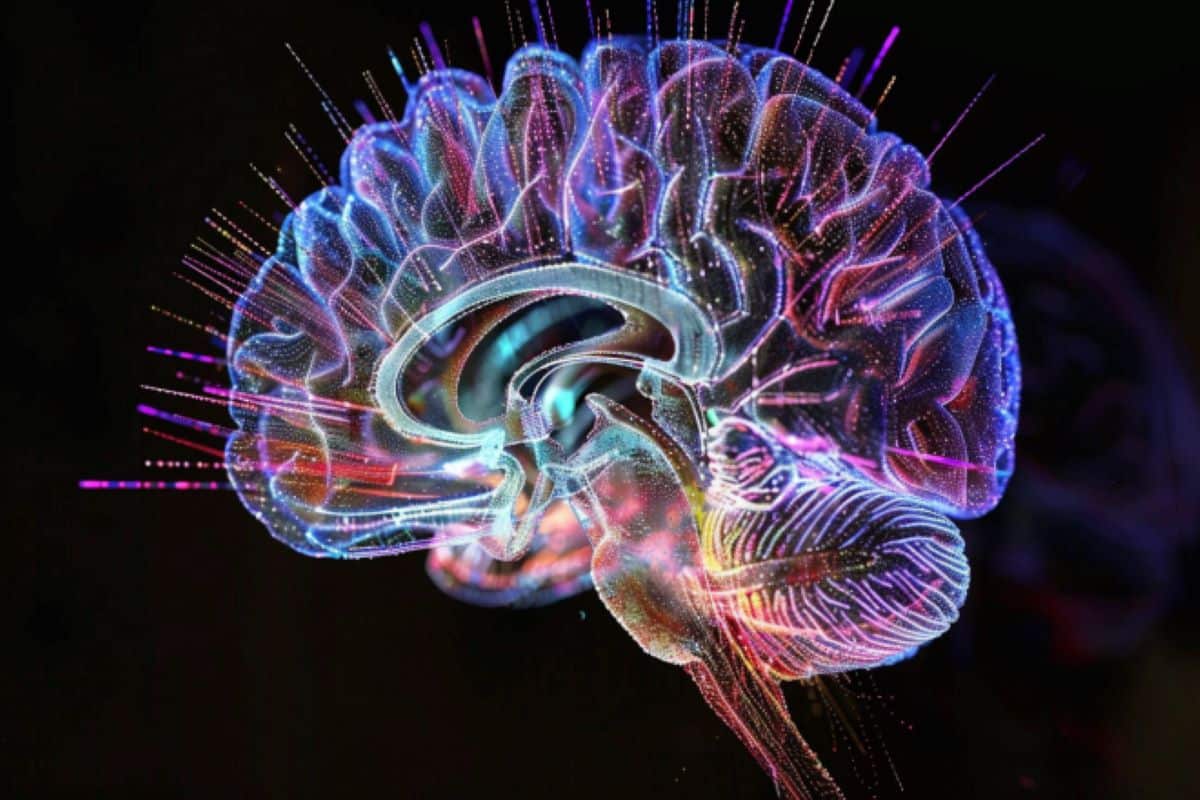Summary: Researchers created an atlas detailing the early genetic development of the brain from weeks 6 to 13 of embryonic growth. This novel work offers a comprehensive view of gene regulation across different brain regions, moving beyond previous studies that focused primarily on the cortex.
The atlas is expected to aid in understanding the developmental errors leading to pediatric brain tumors and could help in developing targeted treatments. Additionally, the study is part of the broader “Human Developmental Cell Atlas” project, which aims to map the genetic development of various organs.
Key Facts:
- Extensive Brain Mapping: The atlas provides a detailed map of gene activation and cellular development in the brain during early embryonic stages.
- Potential Clinical Applications: The insights from this atlas are being used to study and understand the origins of brain cancer in children, potentially leading to new therapeutic strategies.
- Collaborative Research Effort: This research is part of a larger effort, funded by prominent foundations, to create comprehensive cellular atlases for multiple organs, enhancing our understanding of human development and disease.
Source: Karolinska Institute
In an article published in Nature, researchers from Karolinska Institutet present an atlas of the early development of the brain.
The atlas can be used, among other things, to find out what went wrong in the development of brain tumors in children and also to find new treatments.
An international research team led by Karolinska Institutet has mapped the early genetic development of the brain and can now present an atlas of embryonic development between weeks 6 and 13.

“This is the first comprehensive study of brain development with a focus on gene regulation. Previous studies have almost always focused on the cortex, or cerebral cortex. Our study is a systematic mapping of the entire brain so that all regions can be compared with each other,” says Sten Linnarsson, Professor of Molecular Systems Biology at the Department of Medical Biochemistry and Biophysics at Karolinska Institutet and research leader of the study.
When the brain begins to develop in the early embryo, it starts with something like a tube, where the walls of the tube will develop into the brain and the fluid-filled center of the tube becomes the ventricles, the cavity of the brain.
Between weeks 6 and 13 of pregnancy, there is a rapid specialization of the cells in the walls of the tube. This happens through a very complex cascade reaction where substances are secreted that induce the first cells to develop in a certain way. These cells then secrete additional signals that control the next stage of cell development and so on.
The signals activate genes that produce proteins that specialize the different cell types and also act as new signals.
“It is this process, how, in which order and in which cell types genes are activated during this process of brain formation that we have been studying. We wanted to follow the process from DNA to RNA, to the protein at each step,” says Sten Linnarsson.
The research has been carried out using a method that can measure both active regions on DNA and formed RNA strands in individual cells. The researchers have then put the puzzle together and can now present a map of how it works.
The research is part of the larger Swedish project “Human Developmental Cell Atlas” where several research groups have studied the genetic development of the brain, heart, lungs, and so on. The research in the project is now moving forward and the researchers are using the maps to find answers to what went wrong in disease.
“We are now studying the onset of brain cancer in children. Fortunately, it is a rare disease, but of the various diseases that lead to death in children, it is one of the more common.
“We are studying the tumors that arise during embryonic brain development and using the atlas to try to understand the mechanisms of normal development that have gone wrong and how this drives tumor formation and tumor growth,” says Sten Linnarsson.
Funding: The research was funded by the Erling-Persson Family Foundation, the Knut and Alice Wallenberg Foundation, the Swedish Foundation for Strategic Research and EC Horizon 2020. Sten Linnarsson is a scientific advisor to Moleculent, Combigene and Oslo University Center of Excellence in Immunotherapy. He and first author Camiel Mannens are also shareholders in EEL Transcriptomics AB, which owns the intellectual property rights to EEL-FISH.
About this genetics and neurodevelopment research news
Author: Sten Linnarsson
Source: Karolinska Institute
Contact: Sten Linnarsson – Karolinska Institute
Image: The image is credited to Neuroscience News
Original Research: Open access.
“Chromatin accessibility during human first-trimester neurodevelopment” by Sten Linnarsson et al. Nature
Abstract
Chromatin accessibility during human first-trimester neurodevelopment
The human brain develops through a tightly organized cascade of patterning events, induced by transcription factor expression and changes in chromatin accessibility.
Although gene expression across the developing brain has been described at single-cell resolution, similar atlases of chromatin accessibility have been primarily focused on the forebrain.
Here we describe chromatin accessibility and paired gene expression across the entire developing human brain during the first trimester (6–13 weeks after conception).
We defined 135 clusters and used multiomic measurements to link candidate cis-regulatory elements to gene expression. The number of accessible regions increased both with age and along neuronal differentiation.
Using a convolutional neural network, we identified putative functional transcription factor-binding sites in enhancers characterizing neuronal subtypes.
We applied this model to cis-regulatory elements linked to ESRRB to elucidate its activation mechanism in the Purkinje cell lineage.
Finally, by linking disease-associated single nucleotide polymorphisms to cis-regulatory elements, we validated putative pathogenic mechanisms in several diseases and identified midbrain-derived GABAergic neurons as being the most vulnerable to major depressive disorder-related mutations.
Our findings provide a more detailed view of key gene regulatory mechanisms underlying the emergence of brain cell types during the first trimester and a comprehensive reference for future studies related to human neurodevelopment.






